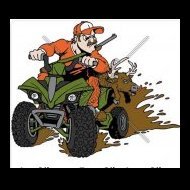Carburetor cleaning / rebuild
-
Similar Forum Topics
-
By P_syko
I’m brand new to 4 wheelers and just bought a 1987 Yamaha Moto 4 350. It has good compression and fuel, but no spark. I’ve looked high and low trying to find how to test all the components of the ignition system, but can’t find anything. This has a new CDI box on it, but I suspect it might be the stator. How do I test the stator on this? Any help would be greatly appreciated!
-
By carkivey3
i just picked this up. was told ran fine but overheating issues led to replacing head gasket and head. has not ran since. he is not a mechanic but helped someone else who he could not get back to finish job, got aggravated and put up for sale. i was thinking timing issues. i have 110-120psi on all 3 cylinders so i think valves are correct. dont know about distributor yet. however i have no spark. i have no power going to ignition coil. tried to follow white wire but gets lost in wire harness. does anyone have a wiring diagram? can anyone tell me what conditions have to be met before starting. motor turns over so i would think all safeties are met but you never know.
-
By jhamrick75
If anyone is having issues with the Mikuni VM24SS carb, I thought I would post what issues I had and how I resolved them.
Acquired a 93 Bayou 220 that had sat for over 4 years.
The carb was extremely corroded and pitted and full of leftover fuel.
Cleaned carb and bowl and was able to get the engine to start.
Within 30 seconds exhaust would heat up and start to glow red hot.
Removed carb and recleaned everything, including a second overnight soak.
Needless to say, after removing the carb for the 5th time and my frustration to the limit I
realized that my attention had been to the carb body and not to the bowl.
There is a small brass rod on the bottom of the carb that goes down into the float bowl but is seperated from the main section. I had cleaned that area very well....I had thought.
***The corrosion had sealed off the channel that runs from the main bowl section to the small tube section on the side of the float bowl. No amount of carb cleaner was going to get it to budge. So i took a small nail and started to scrape away the corrosion and was eventually able to dislodge enought of the corrosion that carb cleaner would flow through that channel. ***
I thoroughly cleaned each side of the channel in the float bowl and reinstalled the carb and now the issue of it running lean is gone.
On a second note the fuel mixture screw was a nightmare to remove as the threads had been corroded and wouldnt let the screw come out. I used a little cutting oil and worked the mixture screw in and out until I was able to push past the corroded threads and completely remove the needle. After a couple passes with a tap to clean the threads it is like new again.
Hope this helps if you are having a lean running machine.
-
By JMSwed
Hi EVERYONE
New member here
Bought me an old Yamaha YFM200, previously had a Big bear and a Suzuki King quad.
Became a member to try to find useful info about the YFM200
-

-
By mmikesell
First post here need some help/advice. I bought a 2001 king quad 300, vin number JSAAK43A212111871. I have been trying to do some basic maintenance as it runs but doesn't idle all that well . I want to take out and clean/repair the carb but when looking for parts it ask for model X Y K1 K2. How do I know which model I have? I have tried some vin decoders but they haven't told me. If anyone could recommend a carb rebuild kit for my quad Id appreciate it. Also any tips on tracking down an owners manual?
-





Recommended Posts
Join the conversation
You can post now and register later. If you have an account, sign in now to post with your account.
Note: Your post will require moderator approval before it will be visible.